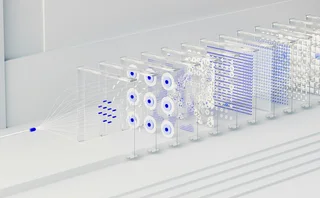BST Awards 2018: Best Buy-Side Risk Management Initiative over the Last 12 Months—StatPro

Portfolio data and analytics provider StatPro has snatched the title of the best buy-side risk management initiative over the last 12 months at this year’s awards from last year’s winner, RiskVal. This is the second time StatPro has bagged this award since 2014, thanks to the new Risk Driver Decomposition (RDD) analysis functionality it launched earlier in the year.
The RDD service helps clients to understand and actively manage their sources of risk. RDD offers deeper risk attribution capabilities through StatPro’s reporting engine that delivers analytics in Microsoft Excel, PDF and other report formats, according to the London-based firm.
Damian Handzy, global head of risk at StatPro, says RDD was developed as a result of several interactions with clients asking for more detail behind the contributions to value at risk (VaR) measures. “But unlike typical conditional VaR approaches, which allocate different amounts of risk to sub-portfolios, StatPro’s RDD answers fundamental questions about the market sources of risk,” Handzy explains. “RDD specifies how much risk comes from, for example, specific tenors of interest rates and credit spreads, and answers questions like ‘how much sensitivity do I have to sovereign credit spreads or manufacturing company three-month rates?’”
Handzy adds that the most challenging aspect of analyzing underlying sources of risk is assigning the risk to a linear combination of interpretable driver inputs. “In other words, re-writing the risk equation in the form: risk = driver 1 + driver 2 + driver 3, etc.,” he says. This is difficult to do for securities with complicated pricing functions as the drivers are not cleanly separable. StatPro uses a machine-learning algorithm, specifically the Multivariate Adaptive Regression Spline (Mars) technique to address this challenge. Mars isolates the effect of each risk driver individually and simplifies the calculation. “The Mars approach uses a piecewise linear basis function to approximate the pricing function,” he says.
Next year, StatPro will include RDD analysis in its flagship platform, Revolution, where clients can configure their own analytics dashboard including RDD. Handzy says this will allow for direct comparisons of performance drivers to risk drivers, which is a critical part of risk budgeting and portfolio allocations. By comparing performance earned with risk consumed, managers can better position their portfolios for profit generation, he adds.
StatPro’s risk analysis has several advancements that it will put into production over the course of the next 12 months. These include fixed-income attribution including multi-asset capability; liquidity risk—time to liquidate; fundamental factor models for global, US, European, UK and South African portfolios; and next-generation credit curves across a global spectrum of institutional bond issuers and currencies.
Only users who have a paid subscription or are part of a corporate subscription are able to print or copy content.
To access these options, along with all other subscription benefits, please contact info@waterstechnology.com or view our subscription options here: https://subscriptions.waterstechnology.com/subscribe
You are currently unable to print this content. Please contact info@waterstechnology.com to find out more.
You are currently unable to copy this content. Please contact info@waterstechnology.com to find out more.
Copyright Infopro Digital Limited. All rights reserved.
As outlined in our terms and conditions, https://www.infopro-digital.com/terms-and-conditions/subscriptions/ (point 2.4), printing is limited to a single copy.
If you would like to purchase additional rights please email info@waterstechnology.com
Copyright Infopro Digital Limited. All rights reserved.
You may share this content using our article tools. As outlined in our terms and conditions, https://www.infopro-digital.com/terms-and-conditions/subscriptions/ (clause 2.4), an Authorised User may only make one copy of the materials for their own personal use. You must also comply with the restrictions in clause 2.5.
If you would like to purchase additional rights please email info@waterstechnology.com
More on Awards & Rankings
AFTAs 2025: Best data provider—Allvue Systems
Product: Private Credit Intelligence
AFTAs 2025: Best IT team—TCW Group
Team: TCW Group’s Investment Technology Team; Project: Engineering Solutions—ABF and insurance launches during Aladdin stabilization
Buy-Side Technology Awards 2025 winner’s interview: 73 Strings
73 Strings’ win in the BST Awards 2025 Best middle-office platform category
AFTAs 2025: Most cutting-edge IT initiative—J.P. Morgan
Project: Vida Beta One
Buy-Side Technology Awards 2025 winner’s interview: S&P Global Market Intelligence
S&P Global Market Intelligence’s success in the first year the Best private markets data provider category has been on offer.
AFTAs 2025: Most innovative third-party technology vendor (operations)—AutoRek
Company name: AutoRek




